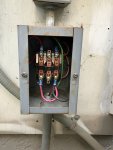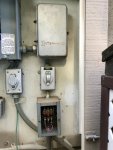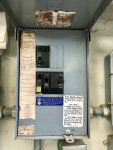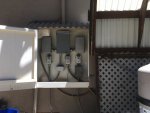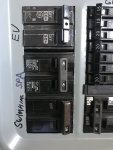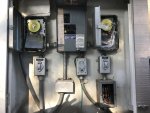Power went out today. Whenever it cycles back on, this breaker usually starts giving a loud buzz. It also may happens if I cycle my pump on/off.
I was told it is a Square D double pole breaker. I’m not sure what that means. My friend/neighbor had told me that he thinks it has to do with the contacts. When it is pulling power, it’s not catching smoothly and making a clean contact. I tightened down all of the wire screws if, if that’s what you call them, as that usually helps. Or, I will have to turn the power on/off a few times and that may do it.
I think the part needs to be replaced. However, I have no idea what this part is exactly. I was hoping to buy it and have an electrician install it or maybe my neighbor.
Above this part, you’ll see a switch labeled sweep. That actually is not the switch. The switch is directly opposite on the left, Not shown in the picture. When it is flipped off, there is no power traveling to this breaker.
any thoughts on what this part exactly?
I was told it is a Square D double pole breaker. I’m not sure what that means. My friend/neighbor had told me that he thinks it has to do with the contacts. When it is pulling power, it’s not catching smoothly and making a clean contact. I tightened down all of the wire screws if, if that’s what you call them, as that usually helps. Or, I will have to turn the power on/off a few times and that may do it.
I think the part needs to be replaced. However, I have no idea what this part is exactly. I was hoping to buy it and have an electrician install it or maybe my neighbor.
Above this part, you’ll see a switch labeled sweep. That actually is not the switch. The switch is directly opposite on the left, Not shown in the picture. When it is flipped off, there is no power traveling to this breaker.
any thoughts on what this part exactly?


